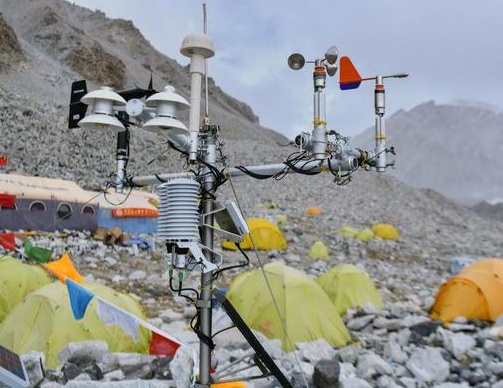Weather stations are critical tools for comprehensive weather monitoring and forecasting. These sophisticated systems provide a wealth of data that can aid in understanding and predicting weather patterns, playing a crucial role in various sectors. From agriculture to aviation, weather stations serve diverse applications, offering valuable insights into atmospheric conditions.
What Are Weather Stations?
Weather stations, also known as meteorological stations, are facilities equipped with instruments and equipment for observing atmospheric conditions. These observations facilitate the forecasting of weather and provide essential data for climatological research. They are the backbone of weather monitoring and forecasting, incorporating various components such as a thermometer for measuring temperature, a barometer for atmospheric pressure, a hygrometer for humidity, and a wind sensor for wind speed and direction.
Weather monitoring is one of the fundamental applications of weather stations. It involves the systematic observation of atmospheric conditions to provide real-time data on prevailing weather conditions. Weather stations monitor parameters such as temperature, humidity, atmospheric pressure, rainfall, wind speed and direction, and solar radiation.
1. Agriculture: Weather monitoring plays an integral role in the agricultural sector. Farmers rely on weather data to make critical decisions about planting, irrigating, and harvesting crops. Weather stations provide accurate, localized data that can help farmers manage their operations more effectively and reduce the risk of crop failure.
2. Aviation: In aviation, weather monitoring is crucial for flight safety. Weather stations at airports provide real-time data on wind speed and direction, visibility, temperature, and pressure, which are critical for takeoff, landing, and in-flight operations.
3. Environmental Research: Weather stations also play a vital role in environmental and climatological research. They provide the data needed to study long-term weather patterns, climate change, and the impacts of extreme weather events.
Weather forecasting is another crucial application of weather stations. By analyzing the data collected through weather monitoring, meteorologists can predict future weather conditions with remarkable accuracy.
1. Public Safety: Accurate weather forecasts can help communities prepare for severe weather events, potentially saving lives and property. Weather stations provide the data needed to issue timely warnings for storms, hurricanes, floods, and other severe weather events.
2. Energy Production: In the energy sector, particularly renewable energy, accurate weather forecasts are essential. For instance, solar power plants rely on sunny weather, while wind farms require windy conditions. Weather stations provide the data needed to predict these conditions, allowing energy producers to optimize their operations.
The wind sensor, or anemometer, is a critical component of a weather station. It measures wind speed and direction, providing essential data for various practical applications.
1. Weather Prediction: Wind sensors contribute significantly to weather prediction. Changes in wind patterns can indicate shifts in weather, helping meteorologists forecast events like storms and heatwaves.
2. Navigation: In maritime and aviation sectors, understanding wind direction and speed is crucial for navigation. Wind sensors provide this data, helping vessels and aircraft determine the most efficient and safest routes.
3. Construction: In construction, wind sensors are used to ensure safety. They provide data that can help assess the feasibility of operations, particularly those involving high-rise structures or cranes.
Weather stations, with their weather monitoring and forecasting capabilities, play a crucial role in various sectors. From agriculture and aviation to public safety and energy production, these systems provide valuable data that enables informed decision-making. The wind sensor, in particular, serves several practical applications, contributing significantly to weather prediction, navigation, and construction safety.
With the increasing impacts of climate change, the role of weather stations is becoming more critical. As we continue to rely on these sophisticated systems for weather data, ongoing advancements in technology promise to improve their accuracy and effectiveness, further broadening their practical applications.
In essence, weather stations are not just about measuring atmospheric conditions; they are about understanding our environment better, predicting future weather patterns, and using this knowledge to improve safety, efficiency, and productivity in various aspects of life.


No comments yet